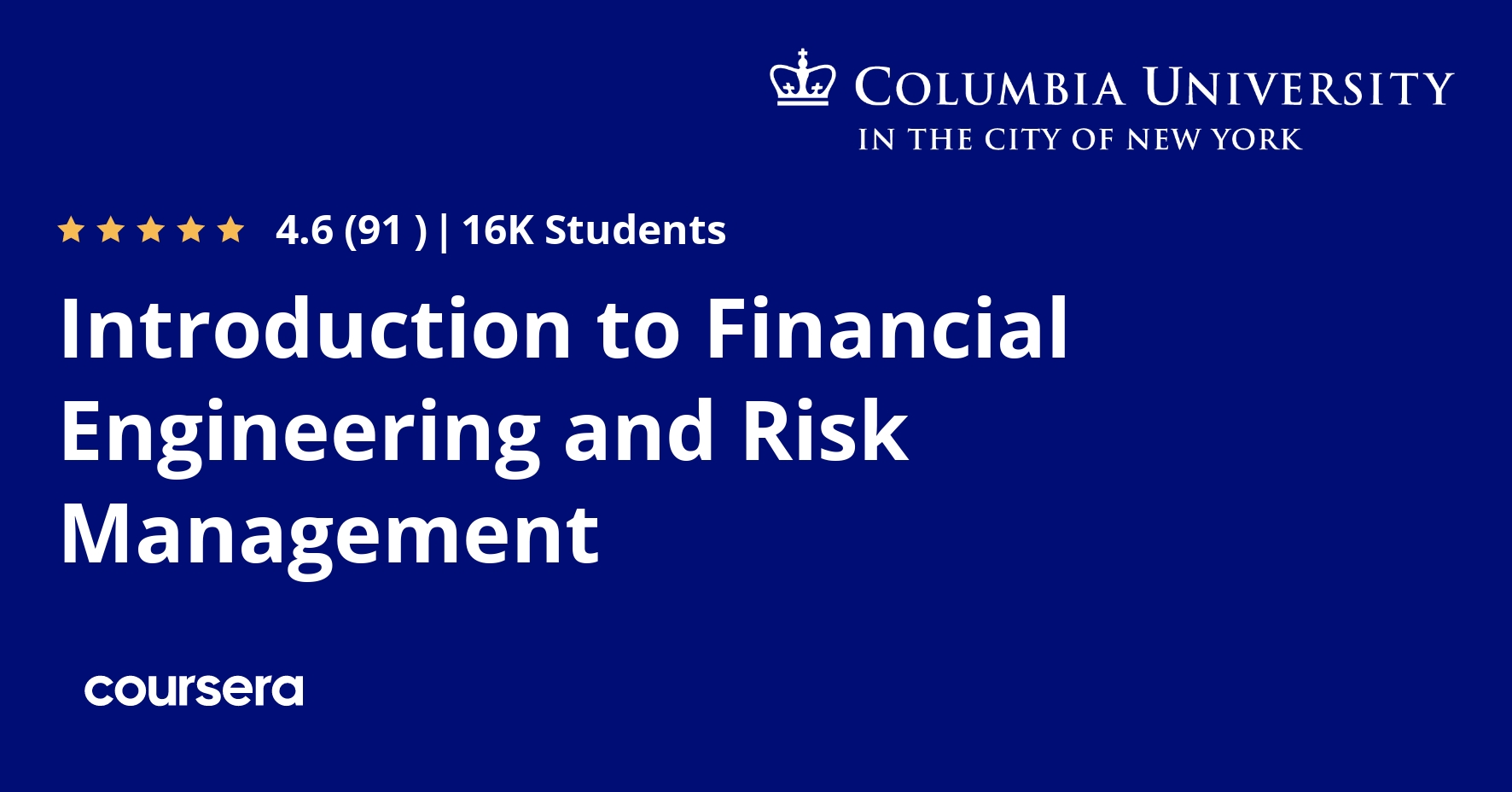Description
Introduction to Financial Engineering and Risk Management course belongs to the Financial Engineering and Risk Management Specialization and it provides a fundamental introduction to fixed income securities, derivatives and the respective pricing models. The first module gives an overview of the prerequisite concepts and rules in probability and optimization. This will prepare learners with the mathematical fundamentals for the course. The second module includes concepts around fixed income securities and their derivative instruments. We will introduce present value (PV) computation on fixed income securities in an arbitrage free setting, followed by a brief discussion on term structure of interest rates. In the third module, learners will engage with swaps and options, and price them using the 1-period Binomial Model. The final module focuses on option pricing in a multi-period setting, using the Binomial and the Black-Scholes Models. Subsequently, the multi-period Binomial Model will be illustrated using American Options, Futures, Forwards and assets with dividends.
What you will learn
Course Overview
Welcome to Financial Engineering and Risk Management
Pre-Requisite Materials
Welcome to Week 2! This week, we will cover mathematical foundations that are necessary for the study of future modules. In a nutshell, we will introduce probabilities and optimization. The theory of probability is the mathematical language to characterize uncertainties, e.g. how to describe the chances that the price of a particular stock will go up tomorrow. To make things precise, we need probabilities. Optimization is a set of toolkits that allow us to search for optimal solutions. For example, given a budget constraint, how do we maximize the profit? We need mathematical optimization. Financial engineers apply probabilistic models to capture the regularities of financial products, and apply optimization techniques to optimize their strategies. These mathematical toolkits will serve as a cornerstone for your financial engineering career.
Introduction to Basic Fixed Income Securities
Welcome to Week 3! This week, we officially embark on the journey of financial engineering and risk management. We will start with the fundamentals of financial engineering, i.e. the principles of pricing. In financial markets, given a financial product, how do we calculate its prices? These pricing principles will serve as the cornerstone of our future modules. We will also cover the basics of fixed income instruments, which serve as the building blocks of financial markets. If you get stuck on the quizzes, you should post on the Discussions to ask for help. (And if you finish early, I hope you’ll go there to help your fellow classmates as well.)
Introduction to Derivative Securities
Welcome to Week 4! This week, we will cover a new family of financial products: derivative securities. Derivative securities, as the name suggests, are financial products that derive their value from some underlying assets, such as interest rates or stocks. The prosperity of modern financial markets is due in large part to the wide variety of derivative securities on the markets such as forwards, futures, swaps, and options as we will introduce in this module. We will also introduce the 1-period binomial model, a simplified framework that allows us to calculate the prices of derivative securities. Despite its simplicity, 1-period binomial model is the building block of more powerful pricing models as we will find out in future modules. As always, if you get stuck on the quizzes, you should post on the Discussions to ask for help. (And if you finish early, I hope you’ll go there to help your fellow classmates as well.)







